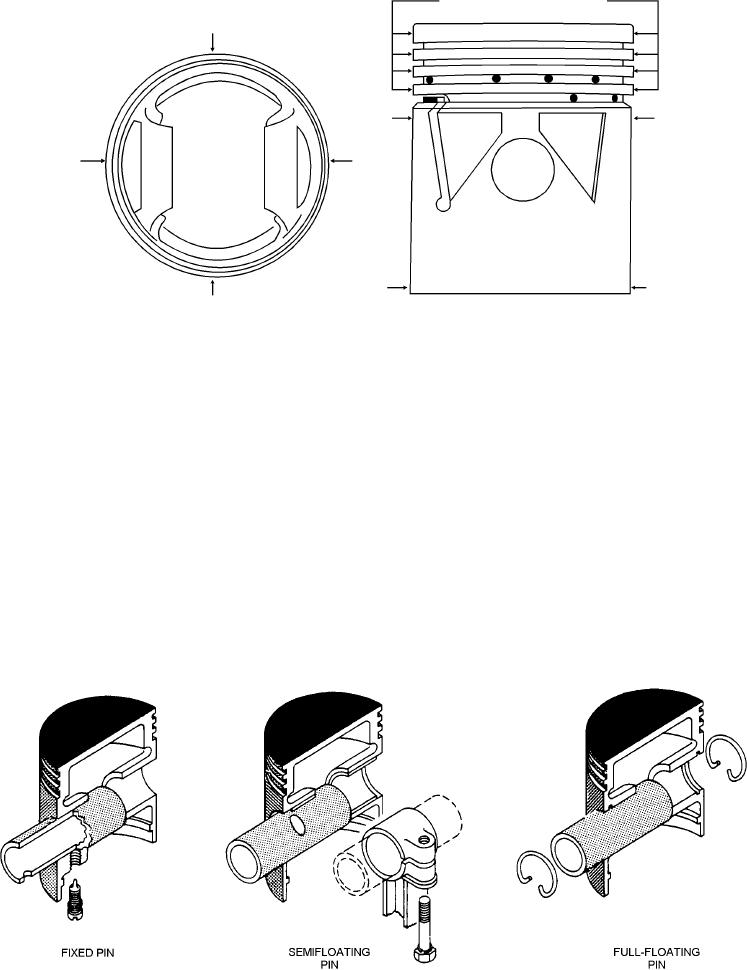
0.028 TO 0.033 IN. LESS THAN
DIAMETER AT (D)
C
A
D
B
THE ELLIPTICAL SHAPE OF THE PISTON
THE SKIRT OF THE PISTON SHOULD
SKIRT SHOULD BE 0.010 TO 0.012 IN.
TAPER SO THAT THE DIAMETER
LESS AT DIAMETER (A) THAN ACROSS
AT (C) IS FROM 0.0005 TO
THE THRUST FACES AT DIAMETER (B).
0.0015 IN. LESS THAN AT (D)
ASf03028
Figure 3-28.--Cam-ground piston.
prevented from working out against the sides of the
minimum of weight. They are lubricated by splash from
cylinder by plugs or snap ring locks.
the crankcase or by pressure through passages bored in
the connecting rods.
PISTON RINGS.--Piston rings are used on the
There are three methods commonly used for
pistons to maintain gastight seals between the pistons
fastening a piston pin to the piston and the connecting
and cylinders, to assist in cooling the piston, and to
rod. (See fig. 3-29.) An anchored, or fixed, pin is
control cylinder-wall lubrication. About one-third of
attached to the piston by a screw running through one of
the heat absorbed by the piston passes through rings to
the bosses; the connecting rod oscillates on the pin. A
the cylinder wall. Although piston rings have been
semifloating pin is anchored to the connecting rod and
made from many materials, cast iron has proved the
turns in the piston pin bosses. A full-floating pin is free
most satisfactory, as it withstands heat, forms a good
to rotate in the connecting rod and in the bosses, but is
wearing surface, and retains a great amount of its
ASf03029
Figure 3-29.--Piston pin types.
3-25

